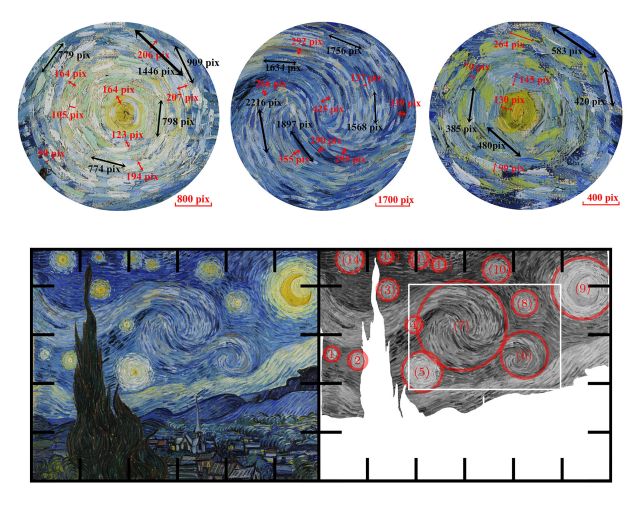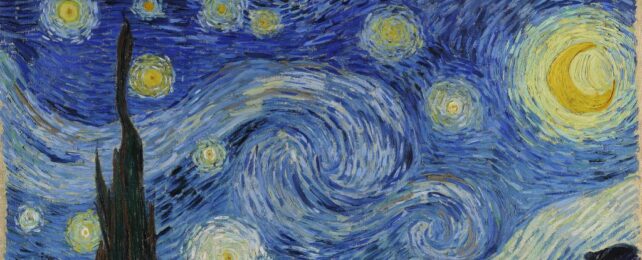Created by Dutch painter Vincent van Gogh in 1889, The Starry Night is one of the most intriguing works the art world has produced. Not only is it breathtakingly evocative, the roiling, swirling sky seems to suggest a detailed understanding of the physics of turbulence.
Now, a new, in-depth analysis confirms it. The brushstrokes in the van Gogh masterwork are consistent with the fluid dynamics of Earth's atmosphere – and, possibly, the broader Universe.
"[The painting] reveals a deep and intuitive understanding of natural phenomena," says physicist Yongxiang Huang of Xiamen University in China.
"Van Gogh's precise representation of turbulence might be from studying the movement of clouds and the atmosphere or an innate sense of how to capture the dynamism of the sky."

We mostly can't see it with our eyes, but Earth's atmosphere is an ever-moving, ever-changing, roiling mass of fluid. Clouds might reveal this constant activity, but an intimate understanding of atmospheric turbulence usually requires instruments that carefully map its otherwise invisible movements.
We can't, of course, measure the atmospheric turbulence that van Gogh depicts in The Starry Night. But what a team of scientists led by physicist Yinxiang Ma of Xiamen University could do was measure the brushstrokes to see if they matched with previous studies, which determined that the turbulence exhibited in the painting is consistent with the theory published by Soviet mathematician Andrey Kolmogorov in the 1940s.
"In contrast to previous studies that examined only part of this painting, all and only the whirls/eddies in the painting are taken into account in this work, following Richardson-Kolmogorov's cascade picture of turbulence," the researchers write in their paper.
"[Our] result suggests that van Gogh had a very careful observation of real flows, so that not only the sizes of whirls/eddies in The Starry Night but also their relative distances and intensity follow the physical law that governs turbulent flows."
The researchers used a high-resolution digital picture of the artwork to examine the brushstrokes in 14 whorls and eddies in the sky depicted in the painting as a tracer for atmospheric turbulence, similar to the movement of leaves in an autumn eddy.

For each of these brushstrokes, they carefully examined the spatial properties, as well as the luminance of the paint, comparing it to Kolmorogov's turbulence theory, which describes how energy flows constantly from larger eddies to smaller ones before dissipating.
They found that the eddies in the painting satisfied the requirements of Kolmogorov'slaw of turbulence scaling, which is what previous researchers have also found.
But analyzing the smallest scales of the brushstrokes, the team found that the painting was also consistent with the power spectrum of scalars as defined by Australian mathematician George Batchelor in 1959. He found that scalars, or scaled components in turbulence – that is, eddies of different sizes – should display a power spectrum corresponding to their size.
A previous study also found that the turbulence revealed in The Starry Night could also be seen in the molecular clouds out in space, where the very stars are born. The new study confirms that the artist's intuitive understanding of the physics of nature may have been even deeper than we realized.
"Vincent van Gogh, as one of the most notable post-impressionist painters, had a very careful observation of turbulent flows: he was able to reproduce not only the size of whirls/eddies, but also their relative distance and intensity in his painting," the researchers write.
Future experimental research in painting turbulent flows could help us understand how the artist managed to capture turbulence, not just in the depiction of the sky, but in the physical act of painting itself.
The research has been published in Physics of Fluids.
